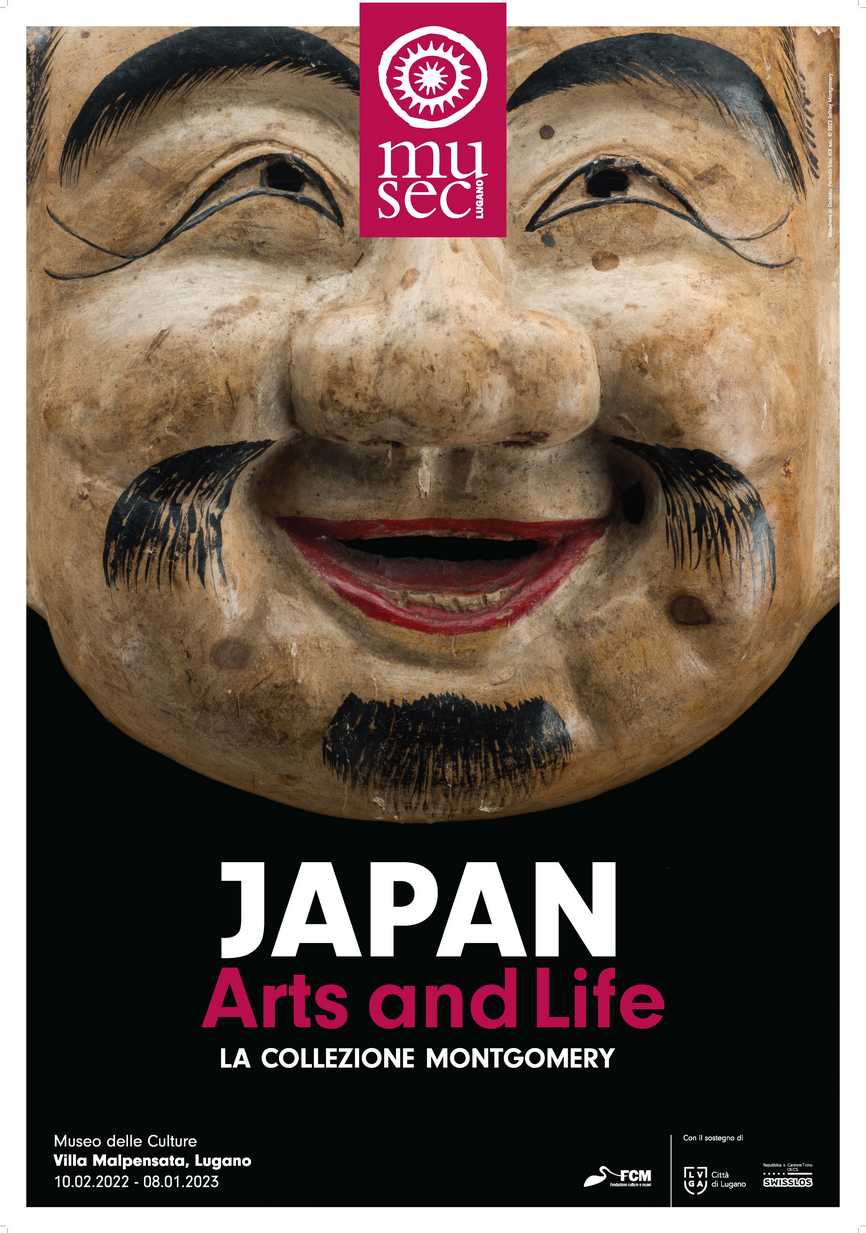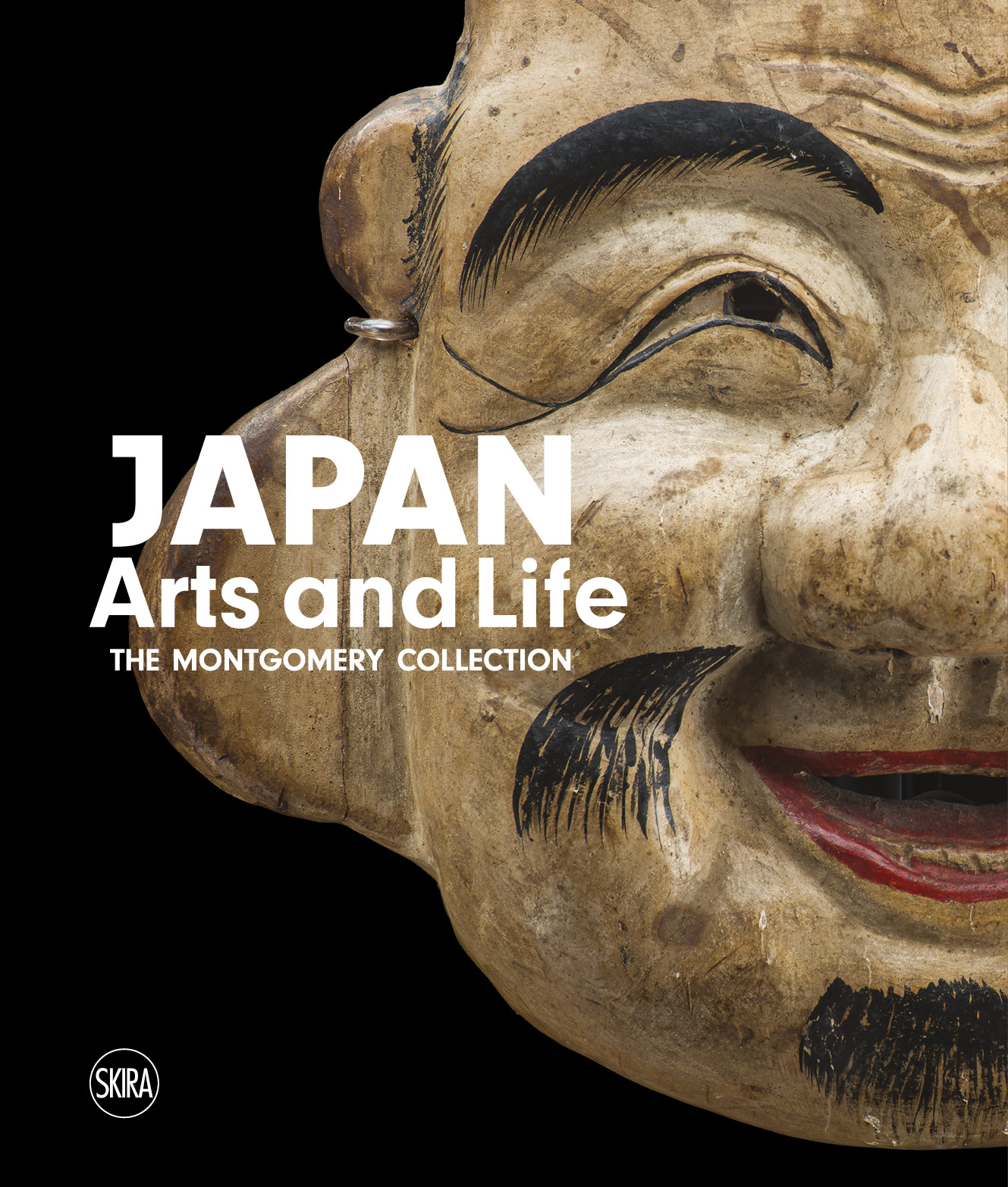Museo delle Culture uses cookies to improve the user experience. If you need more information click on the privacy page. Privacy policy X
10 February 2022, Villa Malpensata, Lugano
At home in Lugano for over fifty years,the Jeffrey Montgomery Collection it is one of the largest and best-known collections of Japanese art outside Japan. With this project, MUSEC celebrates a passion for collecting and a heritage of great artistic and cultural value. A heritage that brings prestige to Lugano, thus consolidating the Ticino city’s historic ties with Swiss and international private art collecting.
Set up on two floors of the “Spazio mostre” in Villa Malpensata, home of MUSEC, the exhibition JAPAN. ARTS AND LIFE presents to the public one hundred and seventy works from the period between the 12th and 20th centuries - including textiles, furniture, paintings, religious and everyday-objects - carefully selected from the over one thousand objects collected over a lifetime by Jeffrey Montgomery. Renowned worldwide, the Montgomery Collection displays an extraordinary richness and a very singular substance: it is a collection of ‘oriental art’, and at the same time it expressed a “folk culture” reinterpreted in very elevated aesthetic terms by the elegant and refined choices made by the collector who had dedicated his entire life to it.
The experience and sensitivity of the collector are at the heart of the project developed by MUSEC and mark its originality, compared to the way in which his collection has been interpreted until now. As Francesco Paolo Campione, director of MUSEC, writes in his introductory text to the exhibition catalogue, “art collections can only have meaning and deep value if they are linked to an existential dimension and the human experience of those who wanted, planned, and consolidated them around themselves. The collector is indispensable to the collection: not only because he created it, but also because he guarantees its originality, interpreting the spirit of the times”.


Tokkuri. Eggplant-shaped sake bottle. 20th century. ©2022 Jeffrey Montgomery/FCM
The Montgomery Collection is the result of the inner quest that accompanied one man through his whole life, a man who thinks of himself as a ‘keeper’, the lucky caretaker of a heritage made of objects bound together by a secret form of solidarity, rather than their owner.
The Collection is also the result of a profound exploration of Japanese culture. The works gathered with unrelenting love over the course of a lifetime are tools for approaching and discovering the countless shades of a culture, that Jeffrey Montgomery feels close to his deepest sensibilities.
The cornerstone on which Montgomery’s vision of things then branched out, concerns the beauty of simplicity, considered to be on a par with a hidden and profound guide. The rarefied elegance characterising for example, paintings, textiles, and laquereses, is almost ineffably combined with the frugal and, in many ways, coarse sobriety expressed by everyday objects.The cornerstone on which Montgomery’s vision of things then branched out, concerns the beauty of simplicity, considered to be on a par with a hidden and profound guide. The rarefied elegance characterising for example, paintings, textiles, and laquereses, is almost ineffably combined with the frugal and, in many ways, coarse sobriety expressed by everyday objects.
The true core of Jeffrey Montgomery's aesthetics concerns the beauty of simplicity, considered to be on a par with a hidden and profound guide. In Japanese art, the rarefied refinement of paintings, textiles, and lacquers, is paired with the austere and almost “rough” simplicity of everyday objects. The oxymoron-like combination is able – these are the collector’s words - to produce masterpieces that fascinate because they combine the sincerest genuineness with a taste for the essential. Such things can be missed if you don’t carefully stop to linger on them, but will on the contrary generate an inexorable sensation of beauty if you observe them for a long time and understand their essence.
In the collector’s mind, beauty cannot truly be authentic if it is not inspired by the shapes of nature, perfect in their absolute imperfection.
The personal creativity and the artistic individuality have no place in Japan at the top of the scale of values. Not because such qualities are unappreciated, but because each genre of works is considered the result of the artist’s ability to express the skills handed down by his ancestors. Skills that originate in the depths of time and that allow the creative gesture to find an ancestral justification. To borrow a Western term, we could perhaps call this value “tradition”, associating to it also the sense of a research that taught man the importance of working with respect, a profoundly religious one, for the ‘secrets’ and the tools of the trade, aiming ultimately to make the world a better place. The work of art expresses a materiality that, far from being technique, as is generally the case in the Western world, rather leads to the idea of the incessant transformation of the world and to the feeling of incurable nostalgia that this transformation entails.

Hitatare. Men's jacket used for kyōgen theatre. First half of 20th century. ©2022 Jeffrey Montgomery/FCM
The end point of Jeffrey Montgomery’s collecting passion could only be existential in its nature. His works do not generate a material accumulation but remain isolated, each with its own specific identity, as tools able to evoke and accompany a true spiritual journey on the meaning of life. If a commonality exists, it can be found, beyond the forms, in an ancient value of the culture that produced them, for which inner peace comes through the acceptance that nothing is finite, nothing is perfect and nothing lasts forever.
Marubon. Tray. 19th century. ©2022 Jeffrey Montgomery/FCM


Jeffrey Montgomery's Portrait. © 2022 Gabriele Putzu for HUB-Corriere del Ticino
Jeffrey Montgomery was born in 1937 in California to a Norwegian mother and an English father. At the age of three he moved with his father to England, where he remained until the age of fourteen, returning to his mother living stateside. At the age of nineteen, he began a nomadic life, during which he started collecting Japanese art and folk art. In 1969, he moved permanently to Lugano and settled with his life partner and wife Mariangela.

The exhibition is accompanied by a book in English, edited by Francesco Paolo Campione, in collaboration with Moira Luraschi. (Japan. Arts and Life. The Montgomery Collection, Skira, Milan, pp. 283).
The volume contains articles by Francesco Paolo Campione (An Impermanent Journey between Art and Life);
Matthi Forrer (Collecting Japanese Art Objects);
Rossella Menegazzo (The Other Side of Japan. The Jeffrey Montgomery Collection between Art, Crafts, and Folklore);
Giorgio Amitrano (Japan, the Beautiful, and Ourselves);
Imogen Heitmann (The Museographical Display as a Creative ‘Meta-work’). Entries of the works reproduced in the catalogue by Moira Luraschi.
At the end: a critical bibliography of the Montgomery Collection and short biographies of the authors